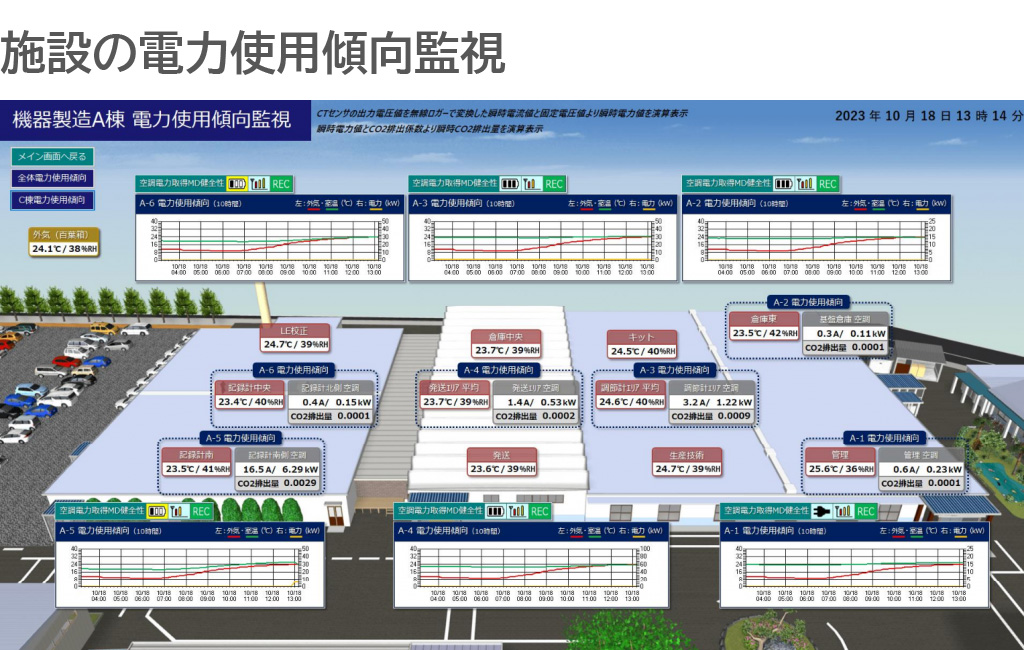The reality of "blank time" occurring in the workplace
Many companies control temperature/humidity by making rounds two to three times a day.
A person in charge walks around the site, visually checks instrument, and records them by hand - this scene has been accepted as commonplace in the manufacturing and logistics industries.
However, there is a fundamental problem with this traditional approach.
This is the "blank time" that occurs between patrols.
No one knows what happens between the 8am patrol and 12noon, and then from 6pm until the next morning.
Four issues that are often overlooked
- Timing-related oversight: There can be a gap of up to 12 hours between the occurrence of an abnormality and its discovery.
- Human error: Recording errors or omissions by personnel, misreading of figures
- Burden of record-keeping: Transcribing data, tabulating data, and creating reports takes several hours every day
- Personal management: If the person in charge is absent, records are lost.
Even if you think you are managing things, in reality there is a lot of blank time -- this is the reality on the ground.
The risks of gaps
In sites that handle products that are sensitive to changes in temperature/humidity, this gap in production time can result in serious economic losses.
Here we look at the risks that may occur in each industry.
Possible risks in the food industry
There have been cases where, due to malfunction in refrigeration and freezing equipment, temperature abnormalities went unnoticed from the night until the next morning, forcing food in storage to be discarded.
In particular, in the case of high value-added products, losses could amount to hundreds of millions of yen.
Potential risks in storing pharmaceuticals
If the temperature inside a warehouse deviates from the limits set by the Pharmaceutical Affairs Law, the stored pharmaceuticals will need to be retested to confirm their quality, resulting in shipment delays and additional testing costs.
Potential risks in precision equipment manufacturing
In high humidity environments such as during the rainy season, dew condensation can form on electronic components, resulting in defective products and making it necessary to recall the products or handle complaints.
Both of these cases could have been prevented if they had been discovered earlier.
The amount of loss varies depending on the industry and company size, but over the course of a year,
The impact of these types of risks can be too great for a company to ignore.
The solution provided by 24/7 monitoring
To fundamentally resolve these risks, a constant monitoring system that does not rely on "human eyes" is required.
By utilizing modern IoT technology, you can build a monitoring system like the one below.
- Real-time abnormality detection: dew condensation risks, which were previously easily overlooked, can now be detected in advance by monitoring the dew point temperature, preventing deterioration of product quality.
- Reducing human error: Prevents recording errors, omissions, and misreading of numbers by staff.
-
Automatic data storage: All measurement values are automatically saved to the PC.
By analyzing past trends, it becomes easier to take measures against seasonal fluctuations.
Chino's CISAS+MD8000 solution
The system proposed by CHINO is an IoT solution that automatically monitors and manages temperature and humidity environments, which are important for maintaining product quality in manufacturing factories and warehouses.
The system completely automates the conventional manual periodic checks and immediately sends alerts when an abnormality occurs.
System Features
Wireless Sensor Network
Wireless temperature/humidity sensors installed in each storage area collect data in real time
Centralized Management
All sensor data is centrally managed by the headquarters' CISAS (monitoring system)
Remote monitoring function
Even if you are not in the factory, you can check the environmental status in real time from anywhere.
Automatic alert function
If the set value is exceeded, the person in charge will be notified immediately by email.
Trend Analysis
Accumulating past data to understand and predict trends in environmental changes
System overview
■ Benefits of implementation
This reduces labor costs, improves the accuracy of quality control, and enables rapid response to abnormalities, resulting in significant improvements in both productivity and quality at the manufacturing site.
Summary: The value of visualization of management
The problem of "blank time" in humidity control is a common challenge faced by many companies.
However, with the help of modern IoT technology, this issue can definitely be solved.
What's important is not to view the introduction of the system as simply "improving efficiency," but to position it as "improving risk management."
A 24/7 monitoring system simultaneously improves quality assurance and operational efficiency, directly linking to strengthening a company's competitiveness.
temperature/humidity control will become increasingly important in the future.
By working on systems development early on, you can secure an advantage over your competitors and build a foundation for stable business operations.



